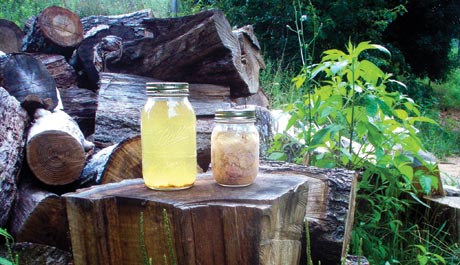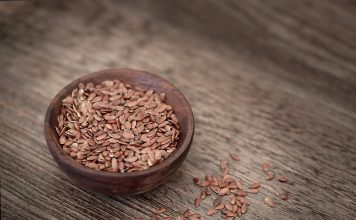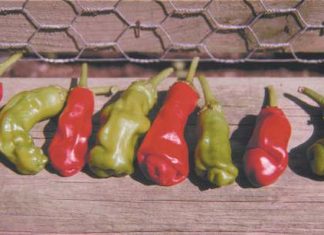| Issue #135 • May/June, 2012 |
For the past three years my husband and I have raised Cornish Cross broilers in chicken tractors on our farm in western North Carolina. This past year we began canning them. In an average summer we process about 100 broilers so that we don’t have to go to the grocery store for chicken. This also gives us some excess to sell. Pastured chickens grown without antibiotics go for up to $3.50 per pound for whole birds in our area. You can pay for your costs and make a profit if you raise enough to sell some. In many states you can process at least 1,000 per year and sell them without inspection, but it is a good idea to check your state’s laws before selling any.
Boneless canned chicken is so nice to have for quick meals. Rather than buying expensive convenience food you can create your own meals at home. Since the chicken is already cooked, it is ready for immediate use in quick soups, sandwiches, and chicken pot pies. Canning your own chicken broth helps to yield the most calories out of your efforts. Good chicken broth at the store is expensive and oftentimes full of salt. Canning your own allows you to adjust the level of sodium to your dietary needs.
With the economy the way it is, many people are thinking about the rising cost of food and storing a little extra in case of hard times. By raising and canning chickens on a pasture or your lawn, you can store a lot of calories without having to worry about refrigeration. In addition, you can be assured of the quality of what you are eating without having to pay as much for it as conventional meat at the store. We yield about nine pints of deboned chicken for every six birds. You can fit a lot in a pint jar. So using our results, if you canned 50 broilers you would have about 72 pints of canned chicken and a bunch of chicken broth.
|
Raising broiler chicks
The first thing you will need to do is decide how many chickens is right for you. Your upper limit coincides with the amount of land you have that you are willing to dedicate to raising broiler chickens. We usually raise 50 birds at a time. This amount will provide two people approximately 100 hearty meals of meat if they are careful and use their leftovers for casseroles and soup. Not bad for something you can raise in the backyard with relative ease.
You will most likely be ordering your chicks unless you happen to live close to a hatchery. It is best to get chicks from a hatchery that is as close to you as possible if they are reputable. There is less shipping stress on the chicks. Many hatcheries have minimum chick orders of 15-25 chicks because they need to ship that many at once in order for chicks to be able to stay warm during shipping. Here lately I have noticed that some hatcheries are shipping smaller orders but are charging a fee since they have to put a heat pack in the box. If you want to save on chick shipping costs and/or you don’t want to order enough chicks to meet a hatchery’s minimum order, then try to find a neighbor that wants a few as well and split the shipping costs.
The hatchery will tell you the day your chicks will arrive. You can request a specific date and they will try to get as close as possible so long as it is during their regular hatching season. Chicks will be a day or two old when they arrive at your local post office. They will call you and let you know that you have chicks ready for pickup.
The day before you expect your chicks, make sure you have a brooder ready for them. You will need a shop light with a special brooder light bulb. These are available at most feed or home improvement stores. A 75-100 watt light bulb can work if the chicks are being kept in a heated building or if it is hot outside. Regardless of what you choose to use, new chicks need a temperature of 99 degrees. We usually put some straw or hay for them to bed down on. You will need a waterer that is shallow enough that chicks can’t drown in it, and a feeder or two depending on how many chicks you have. Dip each chick’s beak in water and then food. They should eat and drink just fine on their own after that. It is very important to make sure they never run out of water or food. You will need to feed your birds a feed that is at least 20% protein. Cornish Cross broilers will not grow well if you do not. Get the non-medicated feed. You don’t want them to be eating a bunch of unnecessary antibiotics. In our experience raising laying hens, the few times we had to use antibiotic feed, it caused their vents to clog up with chicken manure and we had to clean their rear ends. If a chick gets a clogged vent for an extended period of time, they can die. They are literally plugged up.
When the chicks have been in the brooder for 3-4 weeks we put them out in a chicken tractor. For those of you new to the idea of keeping chickens, a chicken tractor is a bottomless chicken pen that can be easily moved to provide fresh greens and scratching for the chickens. We use an 8×8-foot chicken tractor for 50 birds. Since the pen is moved daily this is plenty of room. The chickens also lay down a lot of fertilizer. If you have a spot you want to garden you can run your chickens across it and plant after the manure has had time to compost into the soil.
We allow a ¼ pound of 20% protein feed per bird during their peak growth. This amounts to about 12 pounds of feed per day for 50 broilers.
Butchering
After the birds are eight weeks old we butcher them. The males we raise normally butcher out to a dressed bird of 3½ -5 pounds.
If you have never butchered a chicken before it can be nice to have a neighbor or friend show you how. For the highest quality meat it is best to slit their throats using a killing cone. A lot of chicken supply houses and hatcheries carry them but they cost a lot. We use metal flashing from the hardware store and roll it up into a cone and staple it together. Be careful to turn down any sharp edges on the killing cone. The cone helps keep the bird in place and stops them from flopping around. If a chicken flops around a lot it can damage and bruise the meat. Save the chicken blood in a bucket and use it for your garden in place of blood meal or butcher the chickens over one of your garden beds that needs some nitrogen. The next steps are to scald the bird in 145 degree water. If you don’t have a thermometer than you can use the “three second rule:” when you can only hold a finger in to the count of three then your water is hot enough. Dunk the bird in hot water by its legs and hold it there until you can easily pull the feathers out. It will take you a while to pluck the chicken. It can be helpful to hang the chicken up on a clothesline or equivalent while you pluck. If you plan on doing many birds a year than you will want to invest in a chicken plucker as this is the most time-consuming part of butchering the chicken. After the bird is plucked, he will need to be gutted. It is best to look up some pictures of this online before you do it the first time. It is pretty simple but you want to avoid busting the intestines open with an incorrect cut. If this happens it does not ruin the bird but it smells really bad and you will need to wash the bird very well with water.
It will seem like it takes you forever to do just a few birds your first few times butchering, but do not lose hope. After doing it for a season or so you will get a lot quicker. We only got through five birds a day the first time my husband and I butchered broilers. With a plucker and some experience we recently processed more than 40 birds in about five hours, counting set up and clean up, and that was with a very basic set up. Better equipment and more people will, of course, increase your efficiency.
|
Canning and recipes
We vacuum seal whole birds or cut them up into breasts, thighs, etc. and then chill them in an ice- and water-filled cooler until we take them to the freezer. When we can chickens we cut all the meat off the bone and save the remaining carcass to be boiled for high quality chicken broth. Canning chicken with the bone in is fine to do but it takes a lot more jars and is not as convenient for recipes. The pressure canning processing time is also longer. Below is the outlined process for canning chickens. Times are listed for both boned and deboned chicken.
Debone chicken, set aside carcass for broth. Add any spices you wish to add to the chicken. We add just a bit of salt. Add chicken to sterilized pint jars until you reach right below the rim of the jar. Make sure you add the chicken skin as well. This will render down into a rich fat within the jar. If you are watching your diet you can cut off and discard the chicken skin or boil it for broth. Add water until it reaches the lower rim of the jar (1 inch head space). Place sterilized seals and bands on jars.
Fill your pressure canner to the appropriate water level and place jars in the canner. Bring the canner to 10 lbs. pressure at low elevations and 15 lbs. pressure at high elevations. Process boneless chicken in jars for 1 hour 15 minutes for pints or 1 hour 30 minutes for quart jars. If you choose to can your chicken with the bone in then you will need to decrease your processing time to 1 hour 5 minutes for pints or 1 hour 15 minutes for quarts. Let your jars cool and check to make sure they all sealed before adding them to your pantry.
To make canned chicken broth with saved chicken carcasses:
Place all chicken carcasses in a large pot and cover with water. Simmer for several hours, longer if you have the time. Remove chicken carcasses. Cook down broth as much as you want. The longer you boil it the more concentrated it will get and you will use fewer jars. Season broth with whatever spices you wish. We just add a little salt and black pepper. Ladle hot broth into sterilized jars and add sterilized lids and bands. Place jars in prepared pressure canner and bring to 10-15 lbs. pressure depending on your elevation. Process 20 minutes for pints and 25 minutes for quarts.
Here are a few of our favorite convenient food recipes for using canned chicken.
Fast chicken noodle soup:
1 pint canned chicken
2 quarts chicken broth
egg noodles
diced carrots, potatoes, and onions to taste
spices to taste
Combine all ingredients in a stock pot and simmer until vegetables are tender. Season to taste.
Quick and easy chicken pot pie:
2 pastry crusts (9-inch)
1 pint canned boneless chicken
1 can mixed vegetables (14-15 oz. size) or a pint of your own canned vegetables.
½ cup water or chicken broth with a few tablespoons of flour or cornstarch dissolved in it. Gravy mix will do if that is what you have on hand.
Place crust in a 9-inch pie pan. Dump all ingredients into the pie crust, add the top crust and put a few small cuts in the top to vent. Bake in a preheated 350° F oven for about 30 minutes. Let cool, slice, and serve.
Chicken salad:
Combine 1 pint boneless canned chicken with ½ cup onions, celery, or vegetables of your choice, add mayonnaise and mustard to taste, and spread on bread. This recipe is one of our favorites for busy days when we need a good lunch.

















What antibiotic you referring to?? Amprolium Is an not an antibiotic.
It is an Antiprotozoal.
When I was growing up we would take any chickens that someone was wanting to get rid of and butcher.